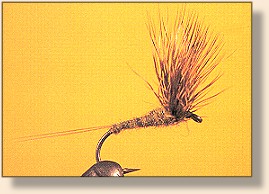The Sparkle Dun is shown at the end of the tying-sequence
photographs. It is a variation of the Comparadun and was created
by Craig Mathews of Blue Ribbon Flies [West Yellowstone, Mt.]
The Sparkle Dun is tied in exactly the same manner as the Comparadun
with the exception of the tail - a shank length tuft of sparkle
yarn is the Sparkle Dun's tail. The tuft suggests the partially
discarded shuck of hatching mayfly. I've fished the Sparkle
Dun to great effect; try it.
Materials: Comparadun Quill Gordon
Hook: Standard dry fly, sizes 14 and 12 (the hook shown is
a Partridge GRS3A).
Thread: Olive (or gray) 8/0 or 6/0 (you can also start
with 3/0, and switch, or simply continue with 3/0).
Wing: Coastal deer hair of medium hue.
Tail: Two to four dark-gray Micro Fibetts (or hackle
fibers, especially on sizes 16 and under), split; olive brown
Z-lon or sparkle poly yarn for the Sparkle Dun's shuck.
Body: Light-gray dubbing with a dash of yellow (Caucci
and Nastasi prefer rabbit dubbing for all Comparaduns).
Tying Steps:
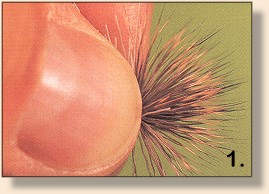
1. Snip a bunch of coastal deer hair from its hide; comb, measure
(from eye to midbend as usual), and tie in the hair about
one-quarter of the shank's length back from the eye using the
pinch. Stack the hair if you wish, but coastal deer is usually
well-stacked on the hide; careful handling will keep it that way.
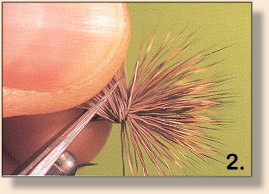
2. Still holding the wing butts after the pinch, raise them
and snip them at an angle. Cover the trimmed butts with
thread. If you are using 3/0 thread, you now have the option
of switching to 8/0 or 6/0.
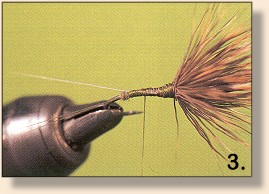
3. Tie in the split tails.
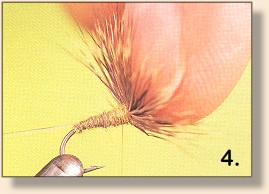
4. Dub a tapered body to the rear of the wing. Set the wing
upright by slipping your thumbnail under it (and over the eye)
and right up against the base of the wing; them rotate your
thumbnail up and back to really crease the wing's base. Repeat
this once on each side of the wing using either your thumbnail
or fingernail.
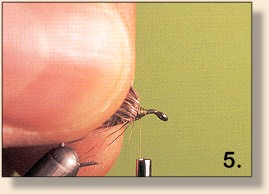
5. Draw the wing firmly back and add tight turns of bare thread
right as its base for support.
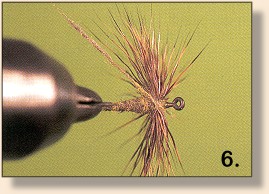
6. (Bottom view.) Crisscross dubbed thread from the front of
the wing to the back and again to the front a few times to cover
the underside of the wing; then dub to just behind the eye
and complete the thread head as usual.
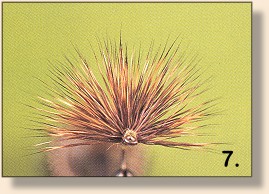
7. The Comparadun wing: front view.
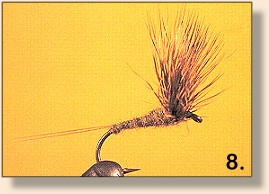
8. Finished fly.
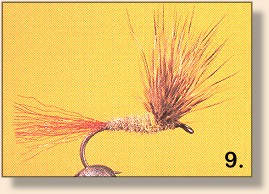
9. The same fly fied in Sparkle Dun style - a shuck of
Z-lon or sparkle poly yarn replaces the split tails. ~ Skip Morris
Fishing Instructions:
For more information on Mayflies, and how to fish them,
click HERE.
~ DLB
Credits: From The Art of Tying the Dry Fly by Skip Morris,
published by Frank Amato Publications. We greatly appreciate use permission.

